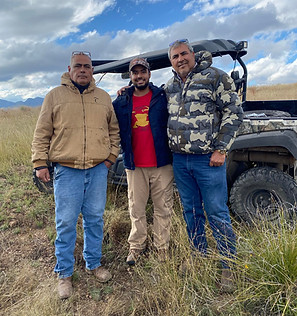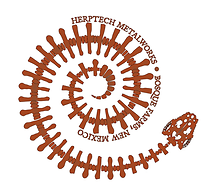Project Obscurus
OVERVIEW
Project Obscurus is an international effort to recover the New Mexico Ridge-nosed Rattlesnake (Crotalus willardi obscurus). This project involves researchers from the U.S. and Mexico, cooperation with 10 different natural resource agencies, zoos, non-profits, and many other independent researchers and volunteers.
Project Obscurus aims to:
-
Better understand environmental factors important to the subspecies (including temperature and humidity) across areas where the rattlesnake lives
-
Continue long-term efforts to find more rattlesnakes within and near areas where they have been previously found
-
Establish a head-starting program for the subspecies at the Arizona-Sonora Desert Museum, Los Angelas Zoo, and San Antonio Zoo
-
Augment populations through genetic rescue within their existing range in the U.S. where the species appears to be declining
-
Provide more information about the status, life history and ecological role of this amazing rattlesnake to the public

Focal Subspecies
The New Mexico Ridge-nosed Rattlesnake (Crotalus willardi obscurus) is a small subspecies of viper found in a small area of the US and Mexico consisting of the Peloncillo Mountains in Arizona and New Mexico, the Animas Mountains of New Mexico, and the Sierra San Luis of Sonora and Chihuahua. A "sky island" snake, this rattlesnake is limited to montane habitats between 5,000 - 8,000ft (approx. 1,500m - 2,500m) in elevation, where it relies primarily on humid woodlands and sometimes grassy slopes. Because of its high level of endemism - that is restricted distribution to a small and fragmented area - this subspecies is considered to be at higher risk of catastrophic declines.


Partners
Project Obscurus owes its ongoing success to a wide network of partnerships focused on facilitating goals related to this project. Government partners include the U.S. Fish and Wildlife Service, Arizona Game & Fish Department, and the U.S. Forest Service – Coronado National Forest, New Mexico Department of Game and Fish, U.S. Geological Survey (USGS), USGS San Diego Field Station, USGS Fort Collins Science Center, and San Bernardino National Wildlife Refuge. International partners including researchers from Universidad Autónoma de Aguascalientes and the IUCN Viper Specialist Group, Zoo partners include the Arizona-Sonora Desert Museum, Los Angeles Zoo, and San Antonio Zoo. Other organizations include Rattlesnake Solutions, Todd Driggers, DVM, Natura Prima, and the Chiricahua Desert Musuem. Phase I of this effort was also aided by a number of other skilled and passionate volunteers who spent days and nights in the Sierra San Luis & Peloncillo Mountains helping to find these small cryptic snakes!
This project wouldn't be possible without the Recovery Challenge Grant awarded by U.S. Fish and Wildlife Service to The Rattlesnake Conservancy, our volunteers, researchers, international partners, and the support of an incredible landowner who saved this project. Thank you to everyone involved!






.png)





Project Timeline
Project Obscurus was selected for the USFWS Recovery Challenge Grant in Summer of 2023. Following this important announcement, a nearly year-long process of planning the logistics for Phase I of the project began, including permitting, transportation, food, medical supplies, and research equipment.
Phase I was carried out and completed July-August 2024. During Phase I, a team of over 40 staff and volunteers tirelessly searched the Sierra San Luis for wild Ridge-nose Rattlesnakes. We successfully captured enough rattlesnakes to achieve 3 goals: 1) establish a head-start program at zoos and aquariums in the US 2) directly release animals into the wild in the US (genetic rescue), and 3) implant temperature loggers and transmitters into wild snakes in the Sierra San Luis to obtain a years-worth of temperature data.
Phase II is underway, with data being collected on radiotracked snakes in the wild and temperature data being logged from habitats. Head-start pairings are set to begin following genetic testing to ensure optimal lineage diversification (to counter-act inbreeding) and preservation of range-specific genes (to ensure better adaptation to variances in microclimate between mountains).







.png)